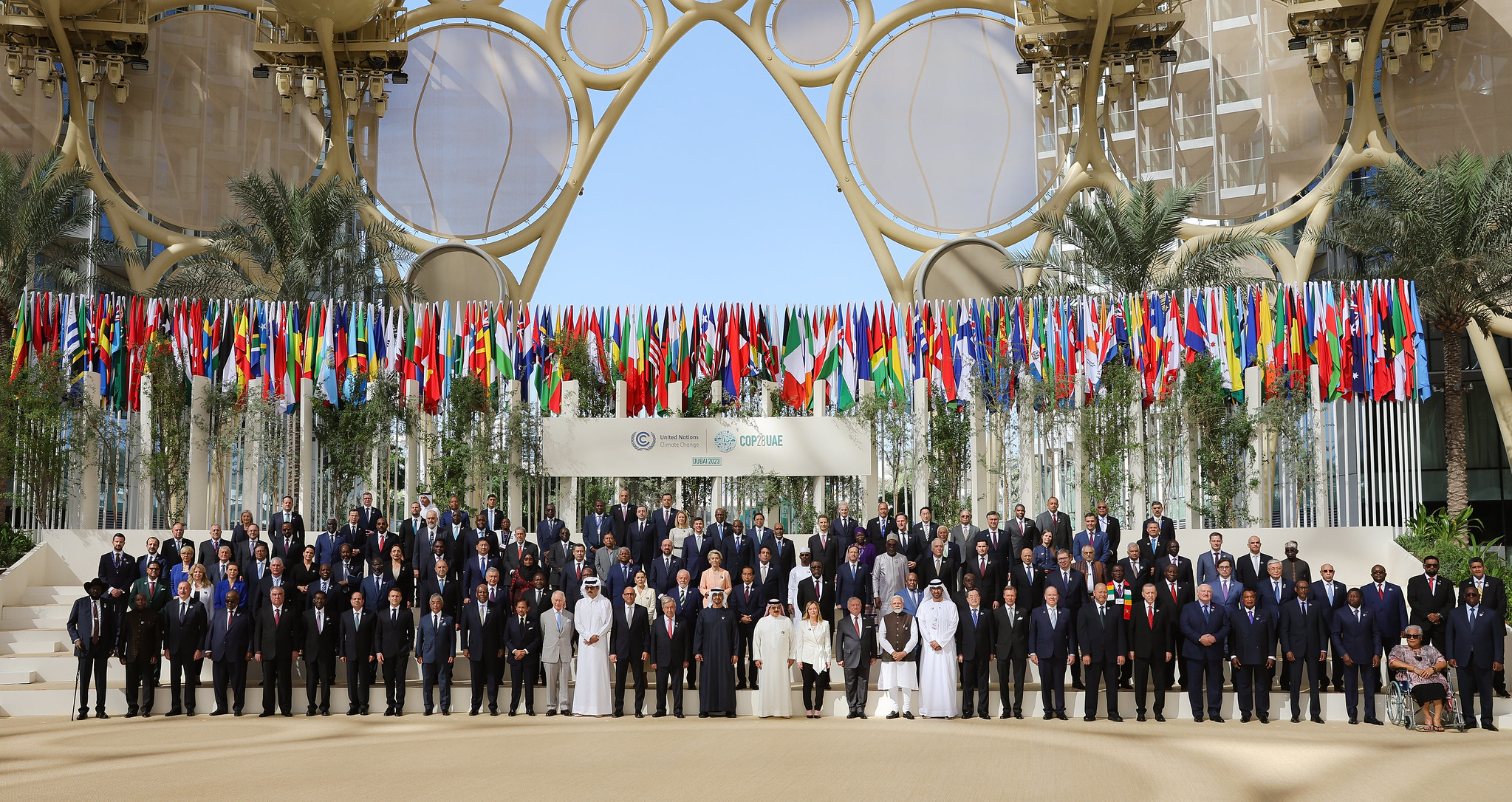At COP25 this week, parties to the United Nations Framework Convention on Climate Change (UNFCCC) will determine a path forward for emission reductions. In 2020, countries are expected to make big changes to their emission reduction strategies. And four years ago, ahead of COP21, CGD’s Owen Barder, Alex Evans, and Alice Lépissier laid out a framework called “SkyShares” that would lock in emissions reductions at the lowest possible cost, and support developing countries’ efforts to eradicate poverty. Below we cover why their big idea is still relevant. You can explore their interactive online model to see how countries are doing today.
The signing of the Paris Agreement could have been a turning point for climate change, but many countries failed to take the opportunity. This year offers another opportunity. Article 6 of the Paris Agreement states that countries are able to trade emissions reductions, and at COP25 this month, world leaders will decide how this will work. A good outcome from these discussions would enable us to solve the two biggest challenges of our age: poverty and climate change. A bad one could seriously undermine our progress.
The task ahead
As Barder, Evans and Lépissier laid out, a strategy to tackle climate change without undermining poverty reduction needs to do three things:
-
Lock global emissions under a global ceiling, so that cumulative carbon emissions do not exceed the carbon budget consistent with a temperature stabilization target of 1.5°C.
-
Allow trading of the remaining carbon emissions to ensure that carbon mitigation occurs in the most cost-effective way possible. Under a global trading scenario, decarbonization will occur where it is the cheapest. Put another way, the world’s remaining carbon budget is precious, and we must put it to the best use possible.
-
Allocate the right to emit fairly, so climate mitigation does not stop developing countries from reducing poverty.
No country has managed to eradicate extreme poverty without significantly increasing its emissions. This is only fair: the atmosphere belongs to us all, and so the right to use it up should be distributed equally before we exhaust our global carbon budget, even if that wasn’t the case in the past.
Most strategies can’t meet these three goals. The nationally determined contributions agreed so far don’t lock in safe emissions. Carbon taxes do not guarantee that the emissions reduction will be sufficient to stay within a safe carbon budget. Current emissions trading schemes have not been efficient, and in some cases may have failed to reduce emissions.
How Skyshares works
SkyShares is based on the “contraction and convergence” model first proposed by the Global Commons Institute, where global emissions contract to a safe carbon budget which is then distributed among countries so that countries’ allowances converge to per capita shares of the global budget. SkyShares sets a carbon budget for each country, consistent with a temperature stabilization target and locking us within safe limits. Richer countries’ emissions budgets decline quickly. Poorer countries’ budgets increase at first, until countries reach equal emissions per capita, then decline. This locks in fairness. Countries which emit less than their allocation can sell the difference to countries who want to emit more. This makes sure that remaining emissions take place where they are most productive, locking in efficiency.
Alice Lépissier built an interactive online model, in which you can pick different parameters (goal for degree of global warming, risk appetite, date of convergence, and trading scenario), and see what would happen to each country’s emissions.
Looking forward to 2020
If the world had adopted the SkyShares model back in 2015, then by 2020, the costs and projected emissions for various countries would have been as follows, in order to stay within a 1.5°C warming goal:
-
The United States would have an allowance of 9.9 tonnes per person, while its projected emissions would be around 14.3 tonnes per capita. This means that the United States would exceed its carbon budget by 1,478 MegaTonnes of carbon dioxide. The US can decarbonize at home up to the point that it is cost-effective to do so, and can purchase the rest from those countries that have a surplus of emissions. The total costs for the US are projected to be around 1.4 percent of GDP.
-
Japan would have an allowance of 6.98 tonnes per person, while its projected emissions would be around 7.2 tonnes per capita. This means that Japan would exceed its carbon budget by 28 MegaTonnes of carbon dioxide. Japan could decarbonize at home up to the point that it is cost-effective to do so, and could purchase the rest from those countries that have a surplus of emissions. The total costs for Japan are projected to be around 0.3 percent of GDP.
-
China would have an allowance of 5.49 tonnes per person, while its projected emissions would be around 6.41 tonnes per capita. China could decarbonize at home up to the point that it is cost-effective to do so, and could purchase the rest from those countries that have a surplus of emissions. This means that China would exceed its carbon budget by 909 MegaTonnes of carbon dioxide. The total costs for China are projected to be around 2.77 percent of GDP.
-
The United Kingdom would have an allowance of 5.4 tonnes per person, while its projected emissions would be around 1.76 tonnes per capita. The UK could decarbonize at home up to the point that it is cost-effective to do so, and could purchase the rest from those countries that have a surplus of emissions. This means that The UK would have emitted 239 MegaTonnes less than its carbon budget. The UK would therefore receive transfers from countries which exceeded their budget. Overall, after the costs of domestic decarbonisation, the UK would have negative costs of .77 percent of GDP.
-
Ethiopia would have an allowance of 1.69 tonnes per capita, while its projected emissions would be around 0.11 tonnes per capita. Ethiopia would receive transfers from countries which exceeded their budget. Overall, after the costs of domestic decarbonisation, Ethiopia would have negative costs of 42 percent of GDP.
Disclaimer
CGD blog posts reflect the views of the authors, drawing on prior research and experience in their areas of expertise. CGD is a nonpartisan, independent organization and does not take institutional positions.





